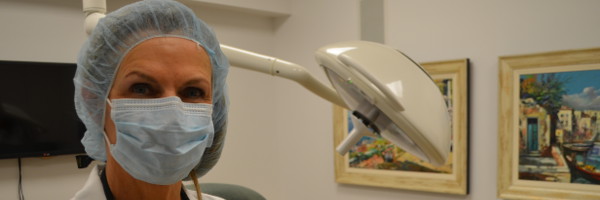MOHS SURGERY
Mohs Micrographic Surgery is an advanced procedure used to remove skin cancer. It is the only skin cancer treatment available that targets cancerous tissue through comprehensive microscopic examination. Dr. Prystowsky, a fellow of the American Society for Mohs Surgery, has performed Mohs Surgery for over twenty years. In addition, she offers multiple methods of scar reduction, taking first priority to save lives, then immediate action to maintain aesthetics.
Because Mohs surgery allows dermatologists to find the “roots” of skin cancer, five-year cure rates are up to 99 percent for first-treatment cancers and 95 percent for recurring cancers. Most commonly used to treat basal and squamous cell carcinomas, Mohs is also used to treat melanoma and other types of cancer. Modified Mohs surgery is often recommended for recurring cancer because its results are so thorough. It is ideal for treating cancer in prominent areas such as the nose, eyelids, lips, hairline, hands, feet and genitals.
Mohs surgery is performed on an outpatient basis in Dr. Prystowsky’s office. She has a well-equipped office to perform the entire procedure. Most Mohs procedures can be performed in three or less stages, which usually takes less than four hours to perform. Some cases may take longer, as there is no way of predicting the extent of cancer growth before treatment begins. Patients should arrange for someone to take them home following surgery.
After Mohs surgery, patients may experience mild discomfort, bruising and swelling around the treated area. Prescription pain medication is available for patients if needed, although most only require an over the counter pain reliever for pain relief.
There will be scarring after Mohs surgery once the area is healed, although the scars from this procedure are often smaller than those from other excision procedures. For patients concerned with the appearance of their skin after treatment, reconstructive procedures are available to reduce and improve the appearance of the scar using skin flaps, skin grafts, tissue filler injections and more. These procedures may be performed at the same time as Mohs surgery or at a later date. Dr. Prystowsky may also utilize certain techniques to reduce visual scarring, including placing stitching in the skin’s natural crevices or out-of-sight areas. In selective cases, Dr. Prystowsky may recommend a plastic surgeon to reconstruct the tissue.
Although Mohs surgery is considered safe for most patients, there are certain risks involved with any type of surgical procedure. Some of these risks may include numbness, muscle weakness, tenderness, itching, pain and failure of skin flaps and grafts. Patients can reduce the risk of complications by choosing an experienced Mohs surgeon like Dr. Prystowsky to perform their treatment, and by following Dr. Prystowsky’s instructions after the procedure.
The above is a general description of the procedure and may not apply to you. A consultation with Dr. Prystowsky is necessary for your own situation.


